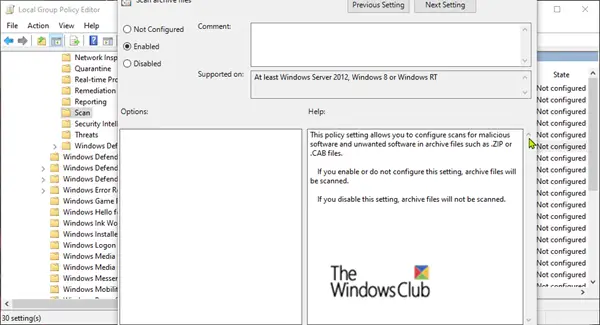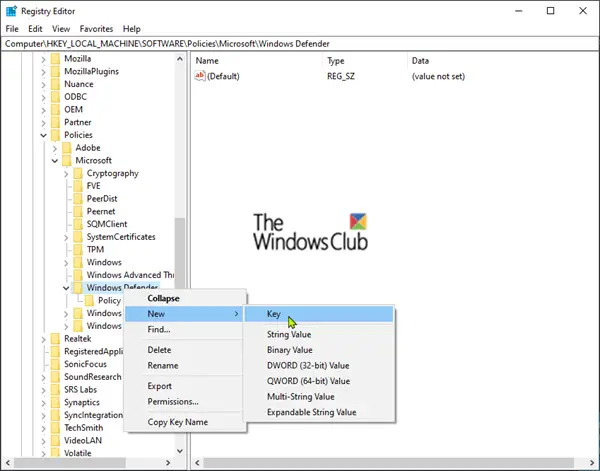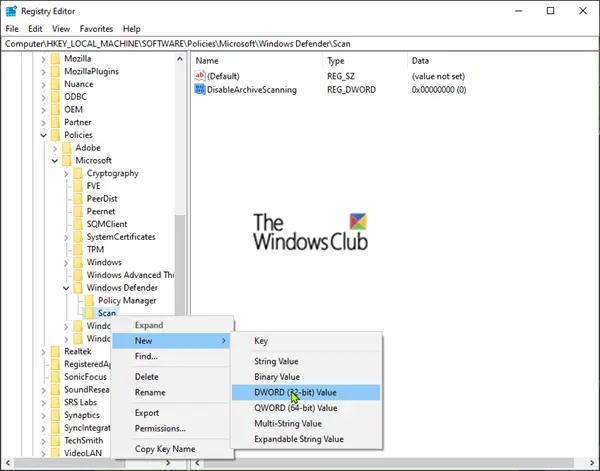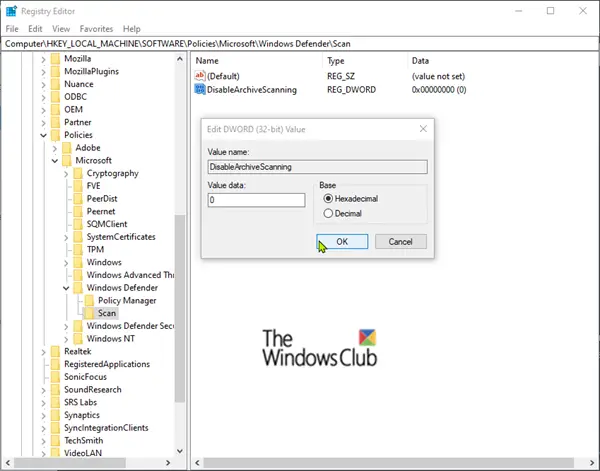On Windows 11/10, you can enable scanning of archive (.zip, .rar, and .cab) files with Microsoft Defender for better and enhanced security and protection. In today’s post, we will show you how to configure Windows Defender to scan archive files in Windows 11/10.
Windows Defender is the built-in security solution in Windows 11/10 and is enabled by default to protect your PC from viruses, malware, spyware, and PUPs.
Windows Defender will scan the contents of .zip .rar .cab files when a scan is scheduled or when the user starts the scanning process manually.
Make Windows Defender scan .zip .rar .cab files
You can enable or disable the option to scan archive files by Windows Defender in three ways:
- Via Group Policy Editor,
- Registry Editor
- PowerShell.
Let us see the procedure in details
1] Configure Windows Defender to scan archive files via Group Policy Editor
Launch Local Group Policy Editor. On the left pane of the window, navigate to this location:
Computer Configuration > Administrative Templates > Windows Components > Windows Defender Antivirus > Scan
In the right pane of Scan in Local Group Policy Editor, double-click Scan archive files policy to edit its properties.
- Click the radio button for Enabled to allow archive files scan
- Or click the radio button for Disabled or Not Configured to disallow archive files scan. This is the default setting.
This policy setting allows you to configure scans for malicious software and unwanted software in archive files such as .ZIP or .CAB files. If you enable or do not configure this setting, archive files will be scanned. If you disable this setting, archive files will not be scanned.
Click Apply > OK.

You can now exit the Group Policy Editor window.
2] Configure Windows Defender to scan archive files via Registry Editor
Launch Registry Editor. and navigate to the following Registry key:
HKEY_LOCAL_MACHINE > SOFTWARE > Policies > Microsoft > Windows Defender > Scan
If the Scan key is not present, create it by right-clicking Windows Defender, click New > Key.

Now, right-click the newly created Scan key, click New > DWORD (32-bit) Value to create an entry named DisableArchiveScanning.

Now, on the right pane, double-click the newly created entry DisableArchiveScanning to edit it’s properties.
In the Value data field, set it 0 to enable the scanning of archive files. Otherwise, set it to 1 to disable the scanning of archive files.

Click OK.
Exit Registry Editor.
Restart PC.
3] Configure Windows Defender to scan archive files via PowerShell
Launch PowerShell in elevated mode.
Enter the command below you want to use into PowerShell, and hit Enter.
To Enable:
Set-MpPreference -DisableArchiveScanning 0
To Disable:
Set-MpPreference -DisableArchiveScanning 1
You can exit the PowerShell environment.
That’s it, folks!